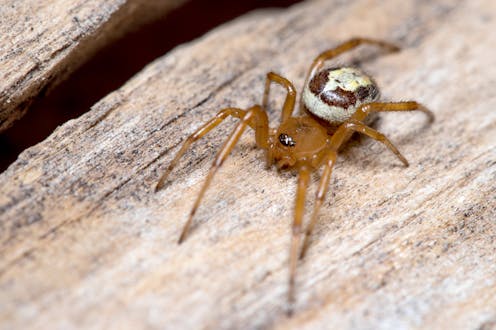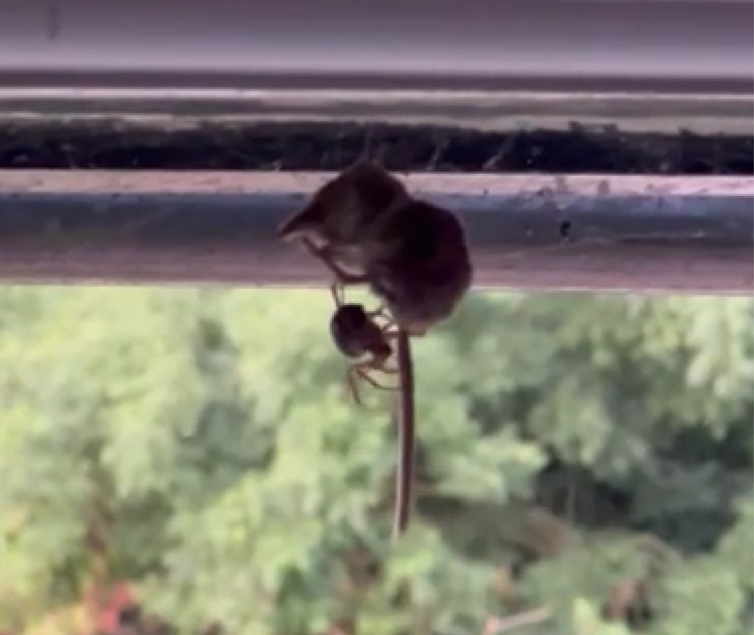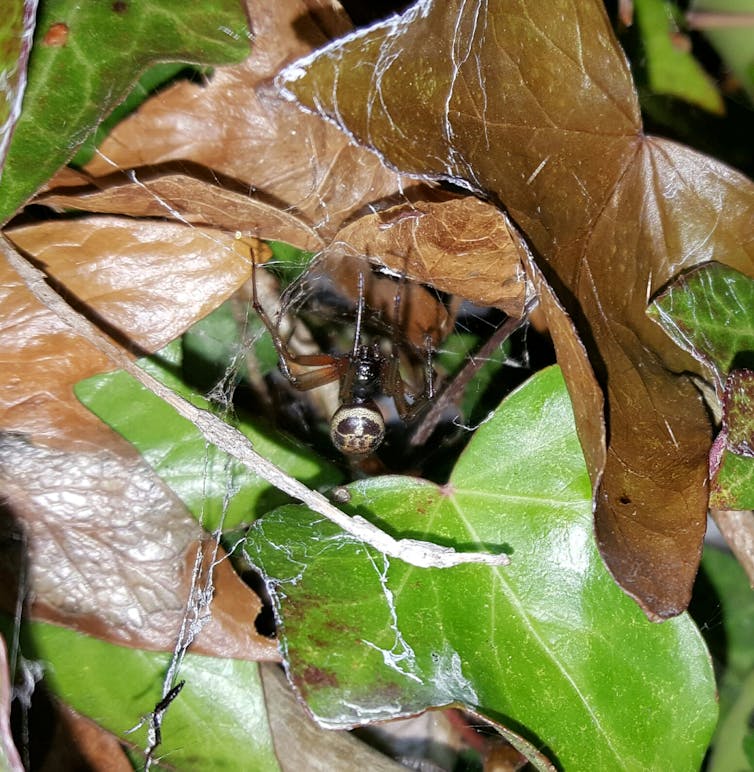
Over the last two decades, an uninvited guest has made an appearance in and around homes throughout western Europe, including Britain and Ireland, as well as west Asia and the Pacific coast of North and South America.
It is small and inconspicuous, yet nothing seems to stop its expansion. From its native habitat in the nooks and crannies of caldera rocks in the highlands of Madeira and the Canary Islands, to feeding on shrews, bats and lizards in the suburbs of London and Dublin, the noble false widow spider (Steatoda nobilis) is a threat to ecosystems that you’d probably overlook.
The noble false widow spider was first described by a taxonomist in 1875. Four years later the Reverend Pickard-Cambridge, a keen arachnologist, identified a young female on the south-west coast of England. In 1929, the author and explorer William Syer Bristowe suggested that Steatoda nobilis may have been imported occasionally from the Canary Islands in shipments of bananas.
In 2000, populations of noble false widows were observed in a narrow area extending from Bournemouth to Southampton and Portsmouth. In 2005, they were seen in London and Birmingham. By 2017, reports of noble false widows were coming from as far north as Glasgow, Edinburgh and the Orkney Islands.
Meanwhile, most of western Europe, from Portugal to northern Germany, was reporting sightings. Further east, the species was discovered in Turkey and Iran, while in the west, populations were reported in California, Ecuador and Chile.
Despite the speed with which this spider has spread, it has yet to be officially recognised as an invasive species. Scientists must first assess the impact it has wherever it’s found outside of its native range. Following a series of allegedly severe spider bites in the UK and in Ireland in 2015, we at the University of Galway Venom Systems Lab began investigating.
We have since published 13 studies on the noble false widow. Our latest research documents one eating a pygmy shrew (Sorex minutus), a protected species in Britain. This is a remarkable feat as pygmy shrews are roughly ten times larger than noble false widows.
This is the first time a spider of this kind has been seen eating a shrew and the third documented case of one preying on small vertebrates, suggesting that this species often preys on animals with backbones.

Alien species are classified as invasive when they reproduce and spread beyond their original site of introduction to damage ecosystems, human health or the economy. By eating and outcompeting native species, noble false widows fit the description of an invasive species.
The noble false widow is not a visually spectacular spider. It has a dark, bulbous abdomen bearing a light brown hexagon that resembles a skull and is roughly the size of a 50p coin. It produces small, messy-looking webs.
When disturbed, this spider either retreats in its hide or drops on the floor and clumsily runs for shelter. Sometimes it plays dead to avoid being eaten. So why is it so successful at invading new territories?
A skilled (but unassuming) predator
Noble false widows outbreed their native competitors wherever they establish. This species can withstand a wide range of climates and remains active during the winter when many spiders native to Ireland and Britain slow down. A study in Ireland showed that females can lay a sack containing up to 200 eggs every three to four weeks between April and September. Many native spiders lay only one to three egg sacks a year.

Noble false widow spiders are close cousins of “true” black widows and share roughly the same arsenal of toxins in their venom. This includes a group of neurotoxins called latrotoxins that are particularly lethal to small animals with backbones.
These proteins bind to nerve endings and disrupt the messages they send, causing muscles and organs to miss signals from the brain which can lead to paralysis and death. Those who have been bitten by noble false widows can testify to how painful a bite can be, sometimes requiring medical attention.
Their venom, which is up to 125-times more potent than the giant house spider (Eratigena atrica), has proved instrumental in their spread, as they can often turn native spiders into their next meal.
The noble false widow can generally eat whatever’s available, including woodlice, flies, centipedes, wasps and bees. But most striking is their ability to prey on animals significantly larger than themselves: lizards, bats and shrews have all been recorded as part of their diet.
To accomplish such feats, false widows set silk strings loaded like springs attached to surfaces. When a prey brushes against these threads, it triggers the booby trap and the animal is lifted off the ground. The spider can then release other threads and hoist the prey with exceptional ease using its silk threads like a pulley system.
Once the prey is immobilised with silk, it paralyses them with a venomous bite. The spider expels digestive enzymes into it and sucks back the broth of softened flesh and digestive juices.
A byproduct of globalisation
Albeit fascinating, the noble false widow could damage ecosystems by displacing native spiders and preying on animals that never evolved to avoid or defend themselves against them. As such, they should be treated like any other invasive species.
In the US between 1960 and 2020, biological invasions were estimated to cost approximately US$1.22 trillion (£1.02 trillion).
Acclimatisation societies in the 19th and 20th centuries introduced rabbits in Australia, possums in New Zealand and European starlings on four continents, all with devastating ecological consequences. These voluntary associations did so in the hope that these non-native species would adapt to their new environments.
Acclimatisation societies are long gone, but the constant movement of people and commodities has increased the risk of biological invasions in the 21st century. The phenomenal spread of the noble false widow is a byproduct of this process of globalisation.
We now have to learn to live alongside them – and do our best to monitor their toll on native wildlife.
John Dunbar is a recipient of the Irish Research Council Government of Ireland Postdoctoral Fellowship GOIPD/2021/358.
Michel Dugon does not work for, consult, own shares in or receive funding from any company or organisation that would benefit from this article, and has disclosed no relevant affiliations beyond their academic appointment.
This article was originally published on The Conversation. Read the original article.







